The Garden as a Classroom, the Plants as a Teacher
Onto the humble assignment of being a student again
Every summer growing up, my dad would build wooden boxes and nurture itty-bitty tomato plants from Lowe’s into tall, leggy stalks that stretched toward the sun and hiked up out of the dirt, jade arms out, leaning out of their silver metal cages. Rubbing the fuzzy leaves between my fingers summons a nose full of that verdant smell and conjures memories of picking ripe fruit as a kid: Carrying handfuls of red to the Sunday supper table; savoring the seed-dotted slices on puddles of rosy juice. To me, that cool, dark green scent of the earth and faintly spicy tomato leaves are my favorite way to drink in summer at its peak.
When I moved into my 1930s home, the big backyard was covered with grass and virtually untouched, save for a few invasive privet bushes. The front had a giant sago palm (which are deathly toxic to dogs!) and heavenly bamboo, also invasive and not to my taste. I was going to transform my space! I was going to create a green, butterfly-dotted paradise! Between a bounty of inspiration from the most gorgeous gardens all over the South from G&G, native plant lectures with the MARSH Project, and an especially impressive neighborhood green space at Hampton Park and Corrine Jones, I had been eagerly awaiting the day I could bust my potted porch plants out of their confines and put them in the ground.
I wanted to make something special like my dad had. And the lush, secretive pocket garden that my friends CJ and Max designed together. And a bird and native–filled ripple of rolling hills like my friend and former professor Leigh Ann returned to the wild.
But as I started digging into the dirt, reality colored and reframed my aspirational thinking. I now know this isn’t bad thing, even though it was frustrating at first to feel like I had made no progress toward the beautiful green space of my dreams. Here are three lessons I’ve learned from my exploration into gardening:
1. It takes time to grow.
The most dense gardens have years of growth under their belts (like all of the ones I admire above). All of the gardens I look to for inspiration are full of mature, well-established plants that have deep roots. And it takes seasons to get those deep roots in the soil, sucking up nutrients and feeding happy plants! I go in the garden every morning to take stock of what’s happening—new flower buds, seed pods, bugs lounging on leaves—and change feels incremental. It looks like some of my plants haven’t changed a bit since the day I planted them months ago. But I have to tell myself there’s a lot happening under the surface. Lots of species like coneflowers, oak trees, and milkweed take their sweet time developing roots before showing off and gaining height and blooms, intentionally sending out energy to expand their support system under the dirt. People say the mantra for perennial natives over the course of three years is sleep, creep, and leap.
For a bit, I felt embarrassed having my friends over. For as much as I talked about my garden, my work felt puny, despite hours of watering the ground with sweat and swinging shovels and hoes. But every beautiful thing has to start somewhere, and it starts small. As my friend Jules has encouragingly pointed out, my garden will undoubtedly take years to fill out, but when it does, it’ll feel lush and full. Good things take time! And just because you don’t see visible change doesn’t mean it isn’t happening. A lot of growth develops under the surface. And as intangible as it is, the resulting strength and ability to weather change makes all the difference.
2. Listen and learn.
“To be native to a place we must learn to speak its language,” Robin Wall Kimmerer shares in Braiding Sweetgrass: Indigenous Wisdom, Scientific Knowledge, and the Teachings of Plants. As an environmental advocate, I was set on growing native plants and being a good steward to the land I was living on, and that required investigation. Like most of the Charleston peninsula, my soil is a mix of nutrient-deficient clay and sand. In some places, it holds a lot of water that takes a day or two to drain. It’s salty and humid. Most of the back gets harsh direct sun; the front is shaded by a pink crepe myrtle. The fussy, but gorgeous, flowers of my dreams, like Monty Don’s carpet of tulips and showy cottage peonies, dahlias, larkspurs, and foxgloves, would not be pleased.
I needed to study plants that thrived in these particular conditions. I walked around my neighborhood and the marsh to see what was happy and growing with abandon, noting what flowers enjoying the strong light and didn’t mind salty, wet feet. I visited Roots & Shoots and paid close attention to information cards and how the staff placed and cared for their varieties: what got full sun, what was constantly submerged in water, what attracted buzzing pollinators. And I absorbed plenty of information from the Marsh Project on species that not only did well in our area, but also served the migratory birds and insects that had evolved alongside native plants for thousands of years and specifically sought them out. Native plants are essential for animals that are specialists, and some species of local insects will only reproduce and eat certain plants known as host plants. Monarchs lay eggs and munch on milkweed; passionflowers shelter and feed Gulf fritillaries; pawpaws support zebra swallowtails. Some bees will only visit a limited number of pollen-producing flowers; roughly 25% of the nearly 770 species of bees native to the Eastern United States are pollen specialists, like hibiscus bees (Hibiscus sabdariffa), Southeastern blueberry bees (Habropoda laboriosa), and iridescent jade short-faced sweat bees (Dufourea monardae).
Walking through my garden is part of my morning routine, and it feels like my most sacred ritual of the day. I try to make sure everything is happy, and if it’s not, I keep a close eye on it. Luckily, nothing is static! The garden is a malleable place. You can dig things up, move them around, and try again. I learned that I was allowed to change my mind and learn from my mistakes. Even when something died, which has inevitably happened, I can admit I didn’t give it enough of a chance to thrive, or my space wasn’t the right fit for it. My Peggy Martin rose needed to move to get more sun; my coneflowers were way too crowded and competing for resources; my swamp sunflowers didn’t like the boggy patch in the back nearly as much as my seashore mallows did. If there’s a problem, I can dig it up and try something else. Another Jules-ism: “The plants will teach you.” My garden showed me a new language that was rooted in listening.
3. Grow with meaning and intention.
As an artist, I wanted to care for a place that inspired me and my practice. But a whimsical cottage cut-flower plot wasn’t realistic for my goal of ecological land stewardship—and I didn’t have the resources to amend my soil or build lots of beds. So I built a library of Lowcountry-specific flowers that were not only beautiful, but they also held memory and meaning. And, because gardens are built over time, the stories only become richer with the texture of life and experience. I can point to certain parts of my garden and talk about someone or a place I love, drawing lines back to old phases I’d lived through.
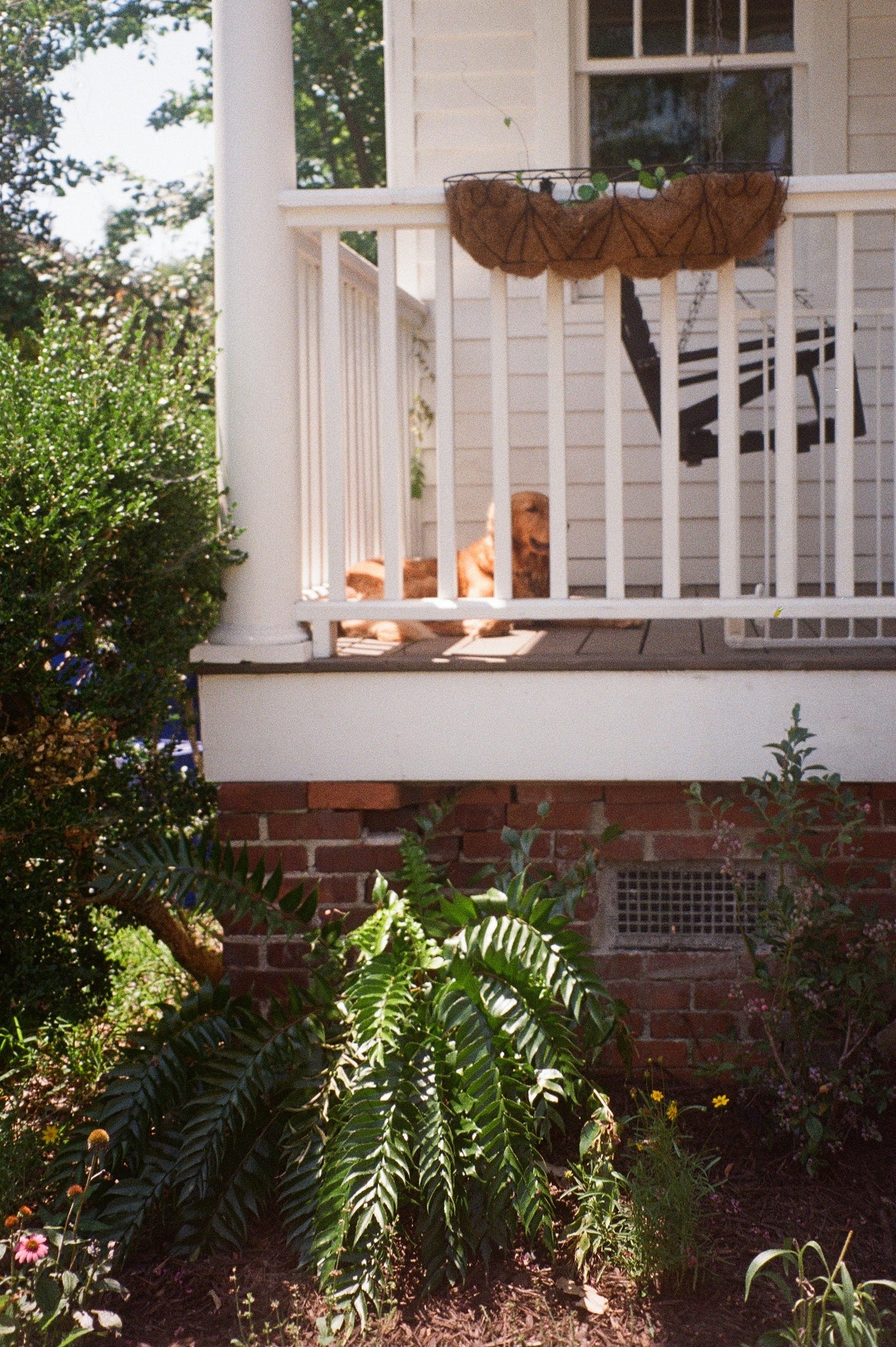
When I look at my garden, I see a reflection of myself, each plant a little bookmark of certain memories. I discovered the resilience of Peggy Martins, my only rose I have (for now), through a story at work and bought a twirling vine two years ago, finally putting it in the ground; my purple passionflower reminds me of the prismatic, alien-looking blooms on CJ and Max’s porch, a couple that has graciously instilled so much of what they’ve learned about gardening in Charleston into me; my white fringe tree, a gift from Blake at the Marsh Project, takes me back to the chartreuse, confetti-like flowers from springtime in Hampton Park; two red oak saplings grow from holes dug by my friend Joel, also from the Marsh Project, and serves as a constant honor to their good work. My coral honeysuckle, my first-ever native plant and most successful porch plant when I lived on Ashe Street, thrives alongside the fence. Delicate, wispy Southern shield ferns call to mind a boy I used to have a crush on who adored the shade-loving fronds and suggested filling the garden with them. Tomatoes smell like being in the garden with my dad as a kid. Bromeliads, gifted by a pair of gardeners I wrote about, drink in the sun, a part of their garden they unearthed from their own to gift to mine.
We are more inclined to nurture for things that we care about and identify with. I delight in the connections and kindness I’ve tended with other people that have brought this space together, because I definitely didn’t do it alone—I asked, and received, lots of help along the way. Gardens foster ecosystems beyond the green; plants bring the hands of different people together. Asking for help is an act of strength, and reciprocity builds more resilient networks. Meaning is born from shared love. And it is a special thing to kneel down in the grass, wipe the sweat off your face and maybe accidentally wipe some dirt onto it, and find a moment of communion outside.





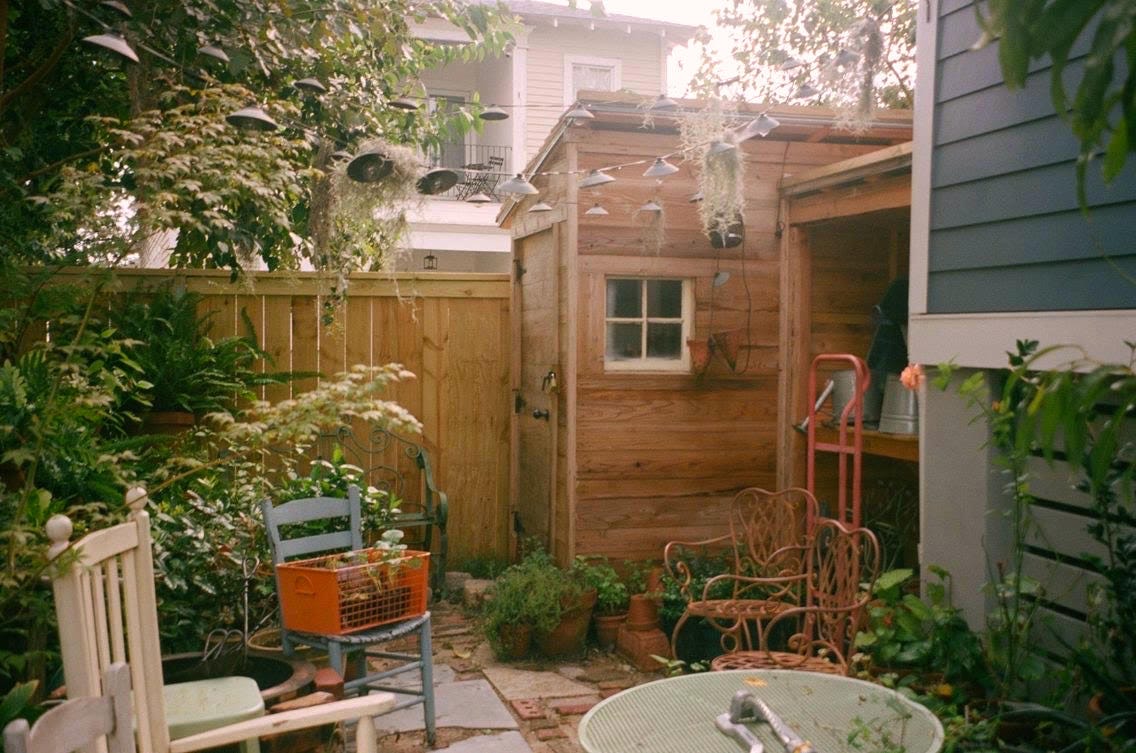
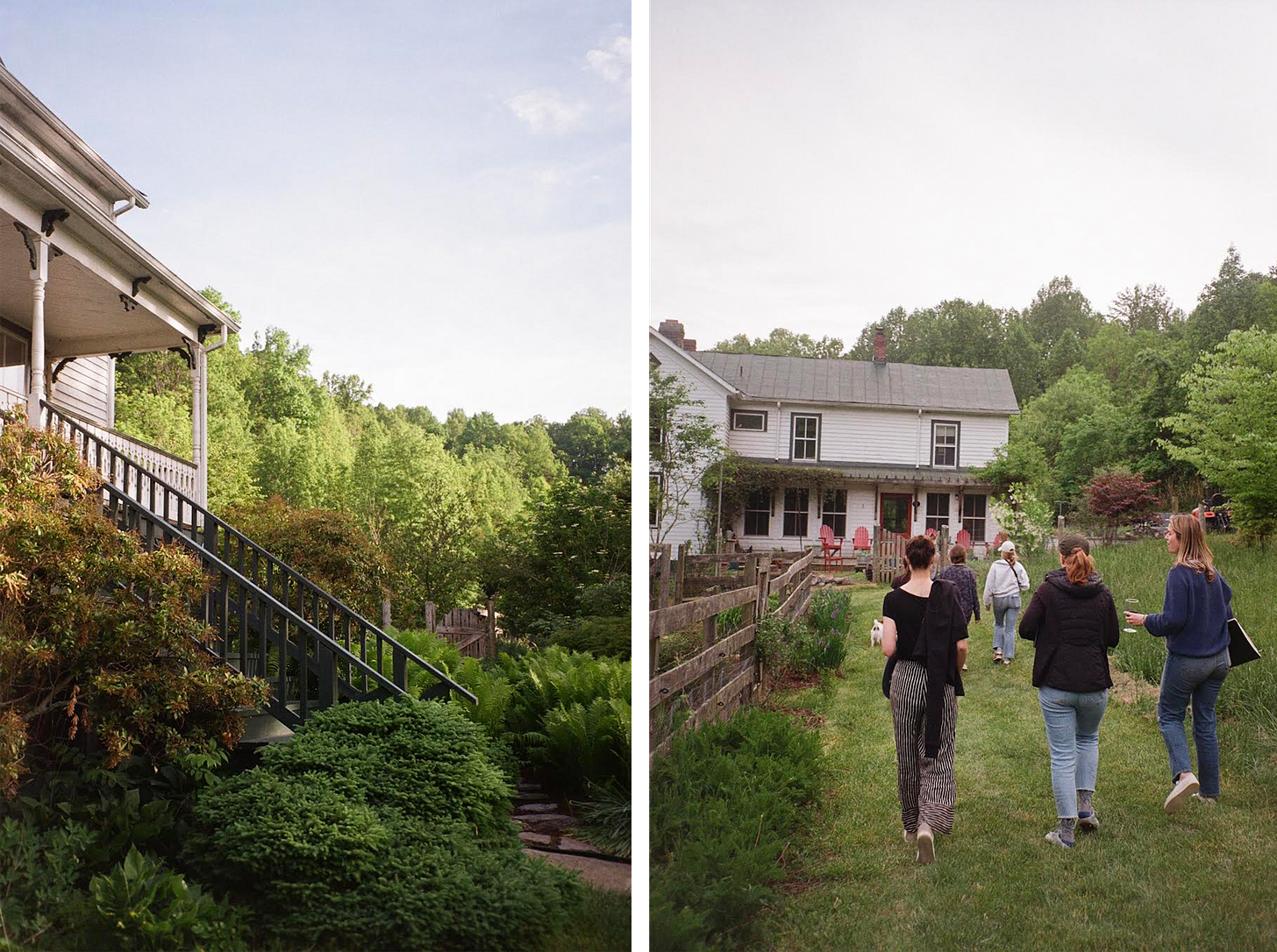
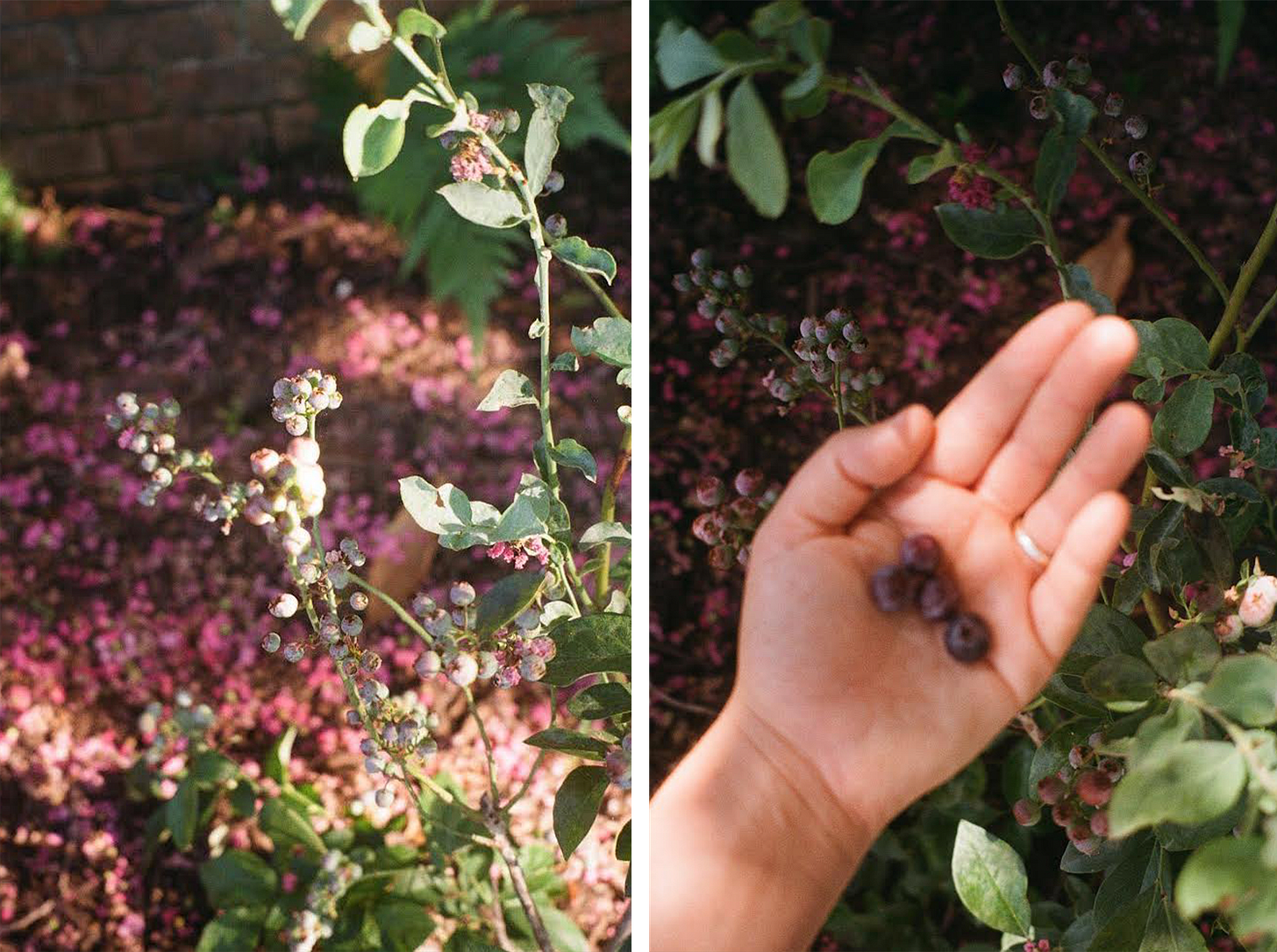
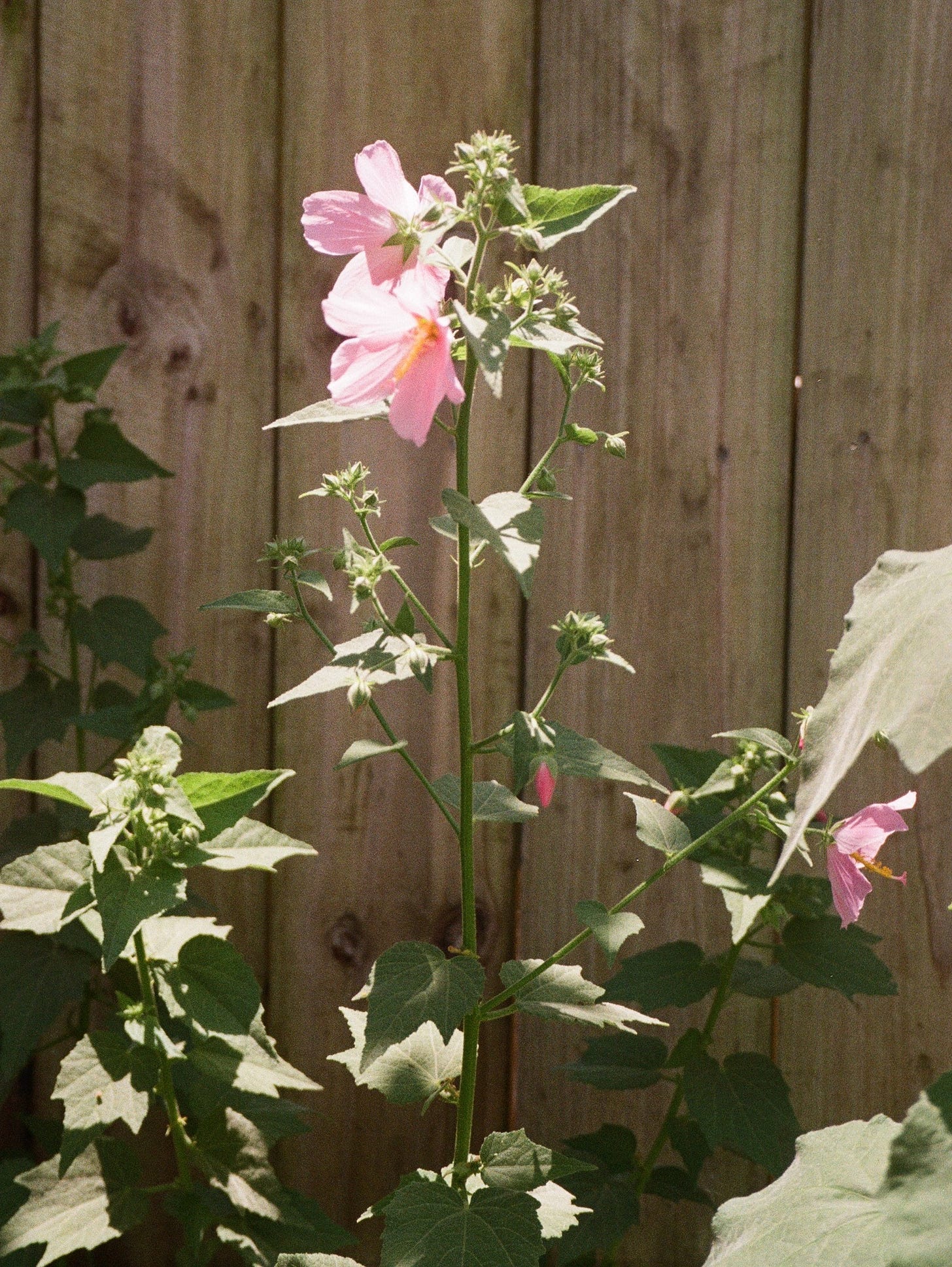
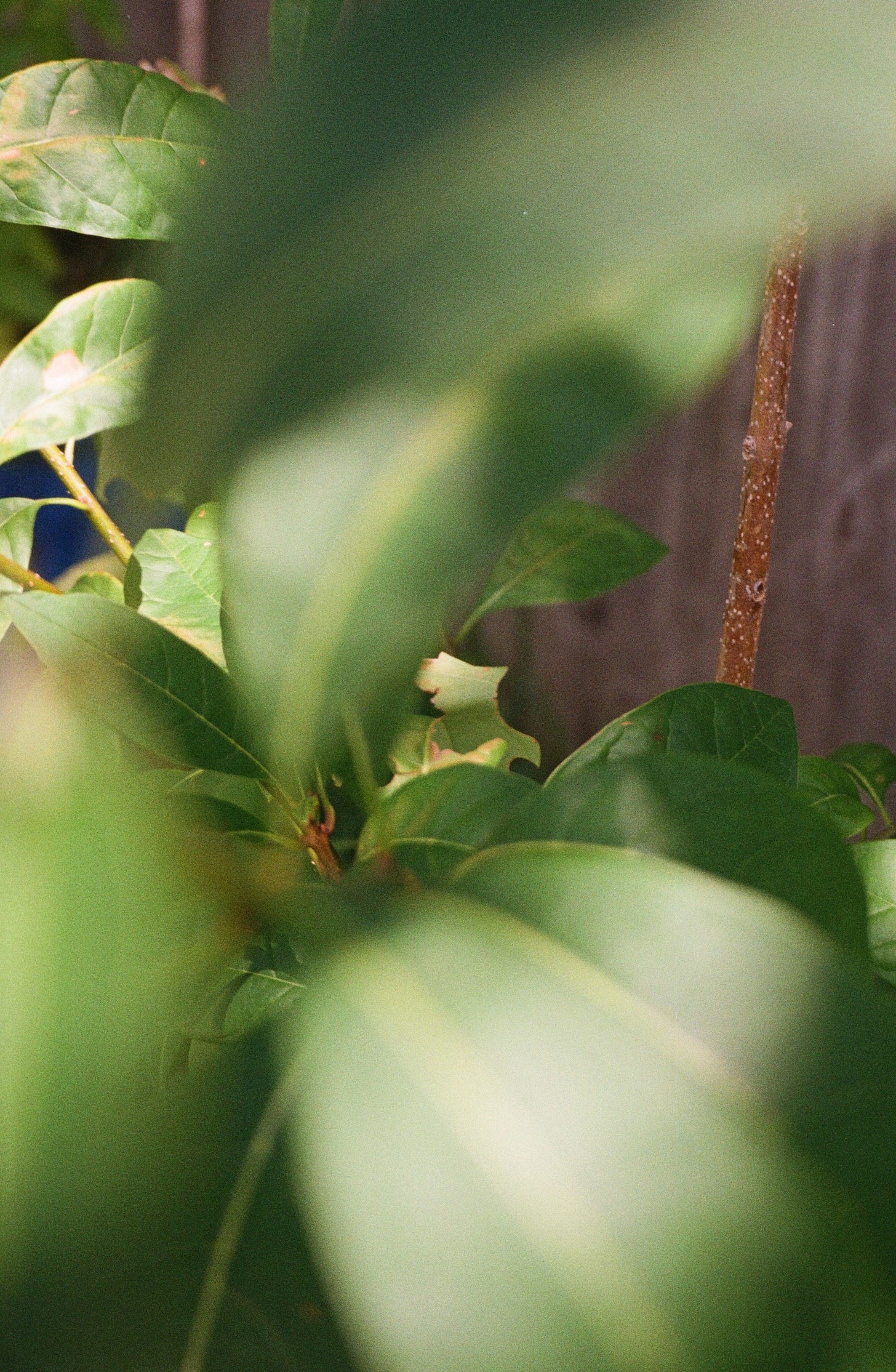
Gabri, your writing makes me feel like I am lying on a cloud—so dreamy and whimsical. Loved the lessons I learned in this post!!
a lovely read